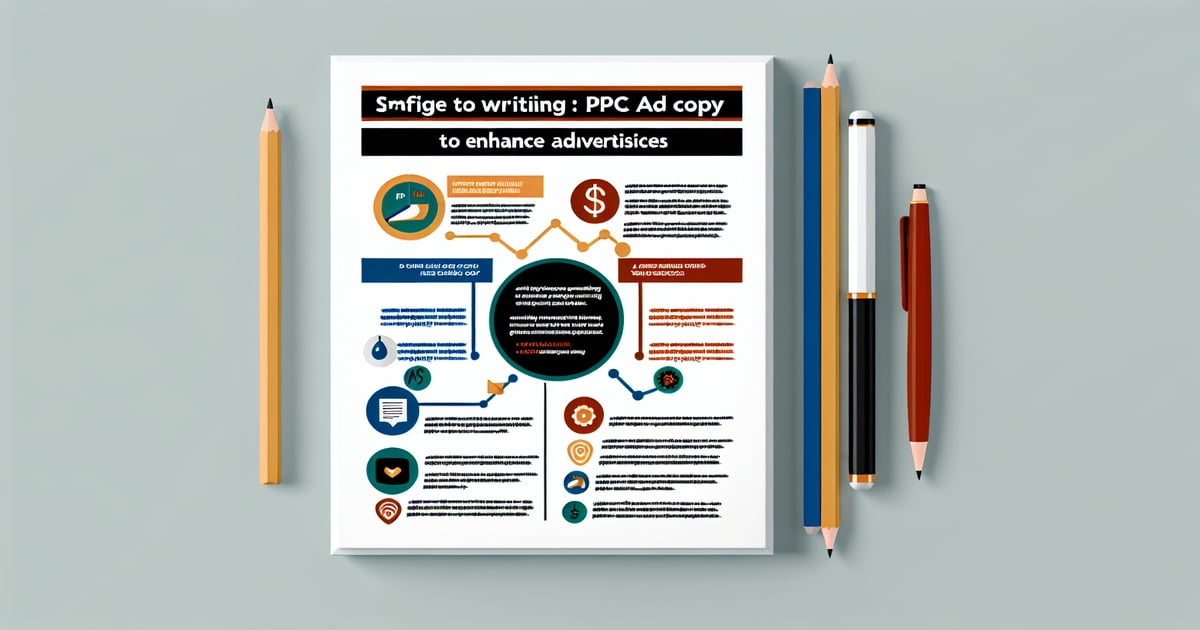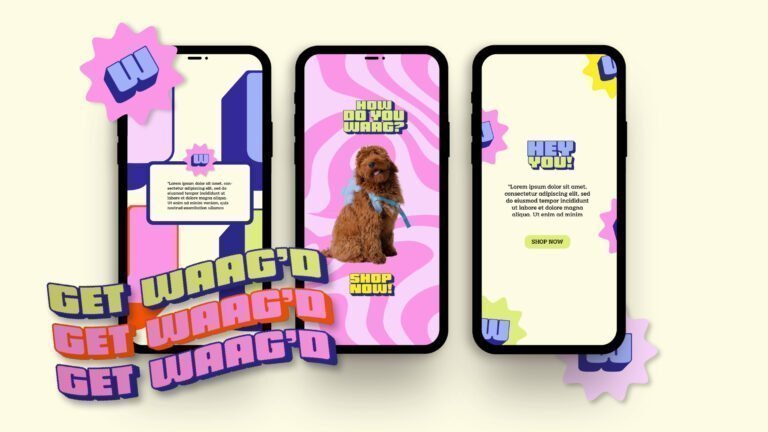Crafting compelling PPC ad copy with character limits is like a writer walking a tightrope amid competition. On one side, you’ve got the need to grab attention in a sea of online noise; on the other, the challenge of delivering your message succinctly and effectively. It’s no small feat—requiring a blend of creativity, precision, and strategy that can turn browsers into buyers. Yet, many marketers find themselves stuck at the drawing board, struggling to make their ads stand out while also driving conversions. In this post, we’ll dive into the art and science behind writing PPC ad copy that not only catches the eye but compels action. From understanding your audience to employing powerful calls-to-action (CTAs), get ready to elevate your ad game.
Key Takeaways
- Crafting compelling PPC ad copy starts with understanding the basics of PPC and the specific needs of your target audience. This ensures your ads are relevant and engaging.
- Headlines are crucial; they should grab attention and make a promise or offer that your ad copy delivers on, making the first impression count.
- Effective ad copy is concise and focused, directly addressing the benefits of your product or service and why it’s the best choice for the consumer.
- A clear and compelling call to action (CTA) is essential for guiding users on what to do next, whether it’s making a purchase, signing up for a newsletter, or another desired action.
- Enhancing ad performance involves continuous optimization, including localizing content for different markets and ensuring your ads are mobile-friendly to reach a wider audience.
- Establishing credibility and trust with your audience can significantly improve conversion rates. Use testimonials, awards, and certifications in your ad copy to build confidence in your brand.
- Regularly leveraging analytics and experimentation with your ad copy can provide insights into what works best, allowing for data-driven decisions to improve your PPC campaigns.
Understanding PPC Ad Copy
Types of PPC Ads
PPC ads come in various forms, each serving a unique purpose. Search ads appear on search engine results pages. They are text-based and highly targeted. Display ads, on the other hand, are visual banners found on websites within an ad network. Lastly, social media ads, for example, blend into social platforms like Facebook or Instagram through the way their headline and copy are presented.
Choosing the right type depends on your audience. If you aim for immediate sales from visitors actively searching for products, search ads with a compelling headline and offer might be best to help. For brand awareness, display or social media ads can visually engage users browsing online.
The format affects how you deliver your message. Search ads require concise text that includes keywords and a clear call to action (CTA). Display and social media ads offer creativity with images or videos but must still convey the message quickly with concise copy, for example, to help engage viewers.
Long vs Short Form
Short form PPC ad copy grabs attention fast. It’s great for high-impact messages with limited space like search or social media headlines, helping to know the example copy. Use it to provoke curiosity or offer something valuable instantly.
Long form ad copy provides more detail which is useful when explaining complex products or services, helping visitors understand better. It allows room to address potential concerns and build trust with readers.
For effective use:
- Utilize short form for quick offers and calls-to-action.
- Reserve long form for storytelling or detailed explanations.
The choice between long and short ad copy forms impacts CTRs and conversions significantly, helping visitors. Short form usually leads to higher CTRs due to its brevity while long-form can enhance conversion by thoroughly informing prospects.
Market Research
Understanding who your target audience and visitors are is crucial in crafting tailored PPC ad copy that resonates with them directly. Identify demographics such as age, location, interests using tools like Google Analytics.
Study competitor’s ads too:
- Look at their messaging.
- Identify what they’re offering.
- Spot any gaps you could fill.
This analysis helps position your ad copy uniquely to attract visitors in the market.
Staying atop industry trends ensures relevance:
- Follow industry news.
- Engage with community forums.
- Monitor consumer behavior shifts regularly.
Crafting Compelling Headlines
Attention-Grabbing Techniques
Power words play a crucial role in making copy headlines stand out to visitors. These are words that spark curiosity or create a sense of urgency. For example, using “Discover” or “Unlock” invites readers to learn something new. Similarly, “Hurry” suggests that time is limited, pushing the reader to act quickly.
Questions in headlines directly engage the reader. When you ask visitors in your ad copy, “Want to Save Money on Your Next Vacation?”, it feels personal. The reader thinks about their own experiences and desires, making them more likely to click on your ad.
Visuals can dramatically enhance your headline’s impact. A compelling image or an eye-catching font supports your ad copy beautifully, attracting visitors. It makes your ad more noticeable among others.
Using Numbers and Trademarks
Numbers add concrete data which boosts credibility. Saying “Save 20% on Your Order Today!” in your ad copy is specific and promising to visitors. It gives readers a clear reason why they should be interested.
Trademarks symbolize authority and trustworthiness. If you’re authorized to use certain trademarks in your PPC ads, do so wisely. They tell visitors that you’re a legitimate partner or seller of well-known brands through your ad copy.
However, balance is key when combining text with numerical data for clarity:
- Keep numbers easy to understand.
- Avoid cluttering the headline with too many figures.
For instance, instead of saying “Get 50% off on over 100 items!”, simplify it to “Save Big: Up To 50% Off!”. This keeps the ad copy message clear while still leveraging the power of numbers to attract visitors.
Writing Effective Ad Copy
Emotional Triggers
Emotional triggers play a crucial role in writing ad copy. By tapping into emotions like fear, excitement, or happiness, you can motivate potential customers to take action. This approach is grounded in the psychology of emotional decision-making during purchases, influenced by ad copy.
For instance, an ad that evokes a sense of urgency or fear of missing out (FOMO) can prompt immediate action. Similarly, highlighting the joy and satisfaction your product brings in the ad copy can create a positive association in the consumer’s mind. Crafting messages that resonate on a personal level involves understanding your audience deeply and speaking directly to their desires and fears.
Value Propositions
A strong value proposition is essential for standing out in crowded marketplaces. It means clearly stating in your ad copy what sets your product or service apart from competitors. Focus on benefits rather than features to address user needs more effectively.
For example, instead of listing technical specifications (features), explain how your product makes life easier or solves a specific problem (benefits, copy). Tailoring these propositions to specific audience segments ensures that your message hits home with those most likely to be interested in what you’re offering.
Persuasive Language
The choice of words matters significantly when crafting effective ad copy. Using an active voice in your ad copy makes your writing direct and clear, which is essential for grabbing attention quickly.
Strategic use of adjectives enhances descriptions without overcomplicating them. For instance, describing something as “revolutionary” instantly adds weight compared to simply calling it “new”. However, it’s vital to avoid jargon that could alienate readers not familiar with industry-specific terms.
Calls to Action
Crafting Strong CTAs
Crafting a compelling call to action (CTA) is crucial in writing compelling PPC ad copy. Your CTA should guide users with clear, actionable commands. It’s about telling them exactly what you want them to do next with the ad copy. Whether it’s “Buy Now,” “Learn More,” or “Sign Up Today,” your choice of words matters immensely.
Placement and copy also play key roles in how effective your CTAs and ads are. Ideally, place your CTA where it catches the eye within the ad copy. This could be at the end of a persuasive sentence or right after highlighting a key benefit of your product or service.
Testing different variations of CTAs can significantly optimize performance. Try altering the wording, placement, and even the design elements around your CTA. Monitor which ad copy versions drive more clicks and conversions on landing pages. Remember, small changes can lead to big results.
Creative Approaches
To stand out among countless ads online, breaking conventional formats and innovating your ad copy can work wonders for your PPC campaigns. Think beyond standard phrases and integrate creative elements into your ad copy that make people pause and take notice.
Storytelling is one powerful way to engage potential customers. By weaving a narrative around your product or service in your ad copy, you make it more relatable and memorable for users. For example, instead of simply listing features, tell a story about how those features improve lives.
Experimenting with humor or wit in ad copy requires caution but offers great rewards when done right; it makes ads memorable and shareable among folks who encounter them online—driving both direct responses and word-of-mouth publicity for brands using this tactic effectively.
However, always tailor these creative approaches to match the tone and expectations of your target audience while ensuring they align with the overall message and copy on landing pages linked from PPC ads.
Enhancing Ad Performance
Ad Extensions
Ad extensions are a powerful tool for writing compelling PPC ad copy. They allow you to add more copy and information to your ads. This includes sitelinks, callouts, and structured snippets. These extensions make your ads bigger and more informative.
Sitelinks give users additional links to click on, leading them directly to other pages on your site. Callouts highlight special offers or features of your services. Structured snippets in ads provide specific information about products or services offered.
By using ad extensions, you enhance visibility and create extra paths for conversion. Your ad stands out more on the search results page. This increases the chances that someone will click on the ad.
You can customize these ad extensions based on what you want to achieve with each campaign. Whether it’s driving sales, sign-ups, or another action, tailor your extensions accordingly.
Split Testing
Split testing is crucial in perfecting PPC ad copy. It involves creating two versions of an ad and comparing their performance. This process helps identify which ad elements work best in engaging potential customers.
A/B testing can cover various aspects of an ad—its headline, description, use of keywords, or even display URLs. After running both versions for a set period, analyze the results carefully. Look at ad metrics like click-through rates (CTR) and conversion rates.
Through continuous split testing, you refine messaging and visuals over time. This iterative approach ensures constant improvement in ad performance. As you learn what resonates with your audience, you can apply these insights across all marketing efforts.
Addressing Audience Needs
Reflecting Visitor Goals
Writing compelling PPC ad copy starts with understanding the visitor’s goals. You align your ad copy with what people are searching for. This means diving deep into the intent behind search queries. For example, if someone searches “buy lightweight hiking boots,” they’re likely in a buying mood, not just browsing for an ad.
You also need to anticipate user needs based on their journey stage and ad interactions. A first-time visitor might need more information than someone ready to buy. Your ad copy should reflect this difference.
Matching tone and language to visitor expectations in ads is crucial too. If your target audience is young adults, a casual and energetic tone might work best. On the other hand, professionals may prefer clear and concise language without slang.
Pre-Qualifying Clicks
Using specific language helps attract only the intended audience. Say you’re selling luxury watches; words like “exclusive” or mentioning high price points in your ad can pre-qualify clicks by appealing directly to those who are looking for premium products.
Mentioning price points or exclusivity filters interest levels effectively. It ensures that those clicking on your ads have a genuine interest in what you offer, reducing wasted clicks from those seeking cheaper alternatives.
Setting realistic expectations right from the start reduces bounce rates once visitors land on your page. If your product requires assembly or has a learning curve, stating that upfront in the ad can help manage customer expectations and satisfaction rates post-purchase.
By focusing on addressing audience needs through reflecting visitor goals and pre-qualifying clicks, advertisers can create more targeted and effective PPC campaigns that resonate deeply with their desired demographic. This approach not only enhances ad performance but also fosters trust between brands and consumers by ensuring that each interaction begins with clarity of purpose and mutual understanding of needs.
Localization and Mobile Optimization
Localized Content
Creating localized content is crucial for writing compelling PPC ad copy. It means adapting your language and cultural references to fit the regional audience you’re targeting. This approach makes your ads more relatable and engaging.
For instance, if you’re advertising a coffee shop in Paris, using local landmarks or slang can catch a local’s eye faster than generic content. Mentioning in your ad the proximity of your shop to popular spots like the Eiffel Tower can also draw attention.
Moreover, employing geo-targeting helps personalize ad delivery. Imagine someone in New York sees an ad for winter boots available just around the corner. That’s not coincidence; it’s smart localization at work.
Mobile-Specific Content
With most internet users on mobile devices, optimizing PPC ads for these screens is non-negotiable. Your ad layout needs adjustment to look good on smaller screens without losing impact.
Key elements include fast-loading images and text that gets straight to the point. Remember, mobile users scroll quickly. If your ad takes too long to load or fails to capture interest immediately, it’s likely they’ll move on without engaging.
Ensuring CTA buttons are touch-friendly enhances user interaction with your ads. A button that’s easy to tap increases chances for ad conversions significantly.
Establishing Credibility and Trust
Credible Messaging
Creating compelling PPC ad copy goes beyond catchy phrases. It involves building a foundation of trust with your audience. One way to do this is by backing up your claims with statistics or third-party endorsements. For instance, if you claim in your ad that your product boosts productivity by 50%, show real data or testimonials to prove it.
Consistency is another pillar of credibility. Your ads should echo the tone and message across all platforms. This means what you say on social media should not contradict what’s in your PPC ads. A consistent message in an ad reassures customers that they can rely on your brand.
Lastly, be transparent about costs and benefits in the ad copy. Hiding fees or exaggerating benefits in an ad can backfire, damaging trust irreparably.
Customer-Centric Content
To truly resonate with potential customers, focus on solving their problems rather than just selling features in your ad. Imagine someone struggling to stay organized – highlight how your app can simplify their life instead of listing every feature it offers.
Personalization takes this a step further by tailoring ad messages based on user data insights. If someone visited your site looking for winter coats but didn’t make a purchase, retarget them with an ad showing those exact coats maybe at a discount this time around.
Encouraging feedback within ads also plays into customer-centric content creation. By asking for input directly in the PPC ad, you signal to consumers that their opinions matter and are willing to adapt based on their needs.
Leveraging Analytics and Experimentation
Analytics for Insights
To create compelling PPC ad copy, understanding your audience is crucial. This is where analytics come in handy. By tracking key performance indicators (KPIs), such as click-through rate (CTR) and conversion rates, you can get a clear picture of what ad resonates with your audience.
Analytics tools offer insights into the demographics and behaviors of the audiences engaged by your ads. This data allows you to tailor your ad messages more effectively. For instance, if analytics show that a particular age group is clicking on your ad but not converting, you might need to adjust your landing page or offer.
Adjusting strategies based on real-time data analysis ensures that you’re always improving. It’s about finding what works best through continuous learning from each ad campaign’s metrics.
Importance of Experimentation
Embracing failure is essential when experimenting with PPC ad copy. Not every idea will be a winner, but each attempt provides valuable lessons. Creative risk-taking can make your ads stand out among competitors.
The role of experimentation cannot be overstated in writing compelling PPC ad copy. Trying new headlines, calls-to-action (CTAs), or even formats could lead to surprising successes.
Iterative learning from each ad campaign’s performance metrics guides future strategies. For example, if an experimental ad yields higher CTRs than usual, it may indicate a new direction worth exploring further.
Final Remarks
Crafting killer PPC ad copy is like putting together a puzzle; each piece, from snappy headlines to compelling calls to action, needs to fit just right to capture your audience’s attention. You’ve got the tools—understanding your audience, localizing content, and leveraging analytics—to make ads that not only click but convert. Remember, it’s not just about being seen in an ad; it’s about creating a connection that builds trust and credibility with your potential customers.
So, what’s next? Dive in! Experiment with different strategies, mix up your ad words, and keep an eye on what works and what flops. The world of PPC is dynamic, and staying ahead means staying active. Keep refining, keep testing, and most importantly, keep engaging your audience. Your next blockbuster ad copy is just a draft away. Ready to make some waves? Let’s get cracking!
Frequently Asked Questions
How do I start writing compelling PPC ad copy?
Start by understanding your audience’s needs and crafting headlines that grab their attention. Keep your ad simple, relevant, and make sure it promises a clear benefit.
What makes a headline compelling in PPC ads?
A compelling headline is clear, concise, and speaks directly to the reader’s interests or pain points. Think of it as the ad hook that pulls them in.
Can you give tips on effective calls to action for PPC ads?
Sure! Use strong verbs like “Get,” “Discover,” or “Start” in your ad. Make it feel urgent and exclusive – like they’re getting a special deal just by clicking now.
Why is addressing audience needs important in ad copy?
When you address what your audience cares about, you’re more likely to connect with them. It’s like saying, “Hey, I get you,” which can significantly boost ad engagement.
How does localization improve PPC ad performance?
Localization tailors your ad message to fit local cultures and languages. Imagine talking to someone who gets your hometown jokes—that’s how localized ads feel to your audience.
What role does credibility play in PPC advertising?
Credibility tells people they can trust you—it turns skeptics into believers. Include trust signals like awards or testimonials in your ad copy for that extra nudge.
Is experimenting with ad copy really worth the effort?
Absolutely! Think of experimentation as fine-tuning your instrument—the more you tweak, the better it performs. Analytics show what ad works (and what doesn’t), so use them as your guide.









